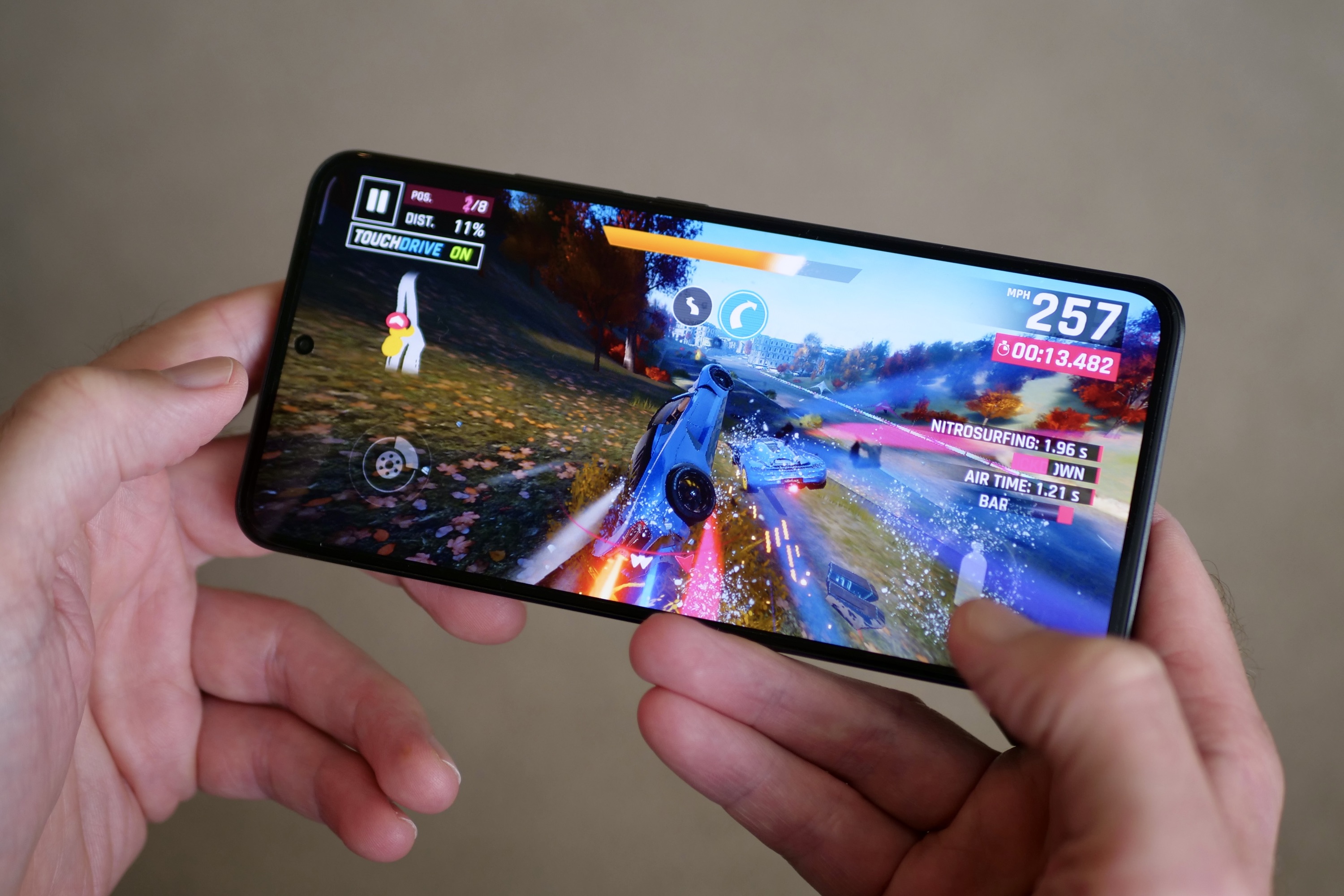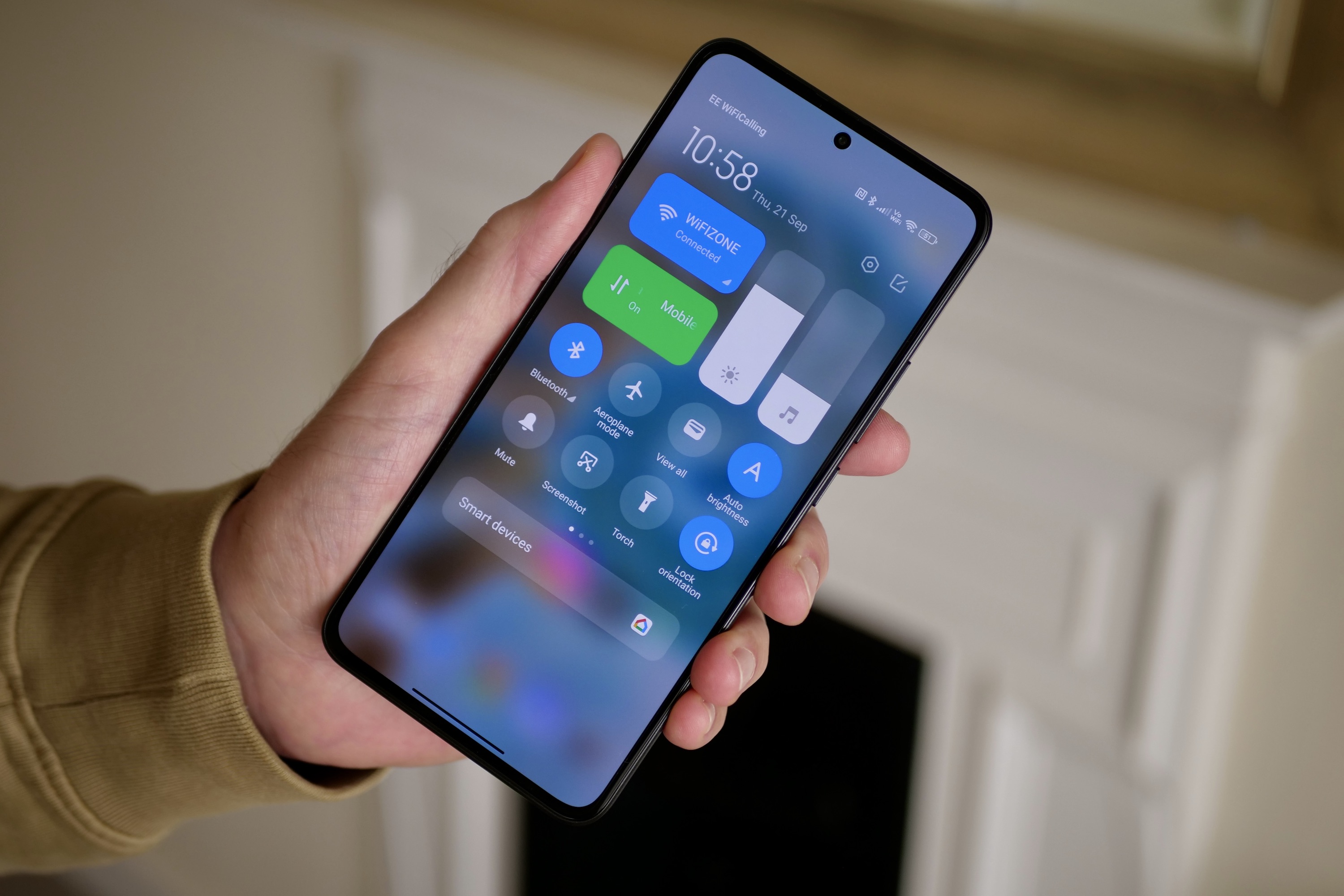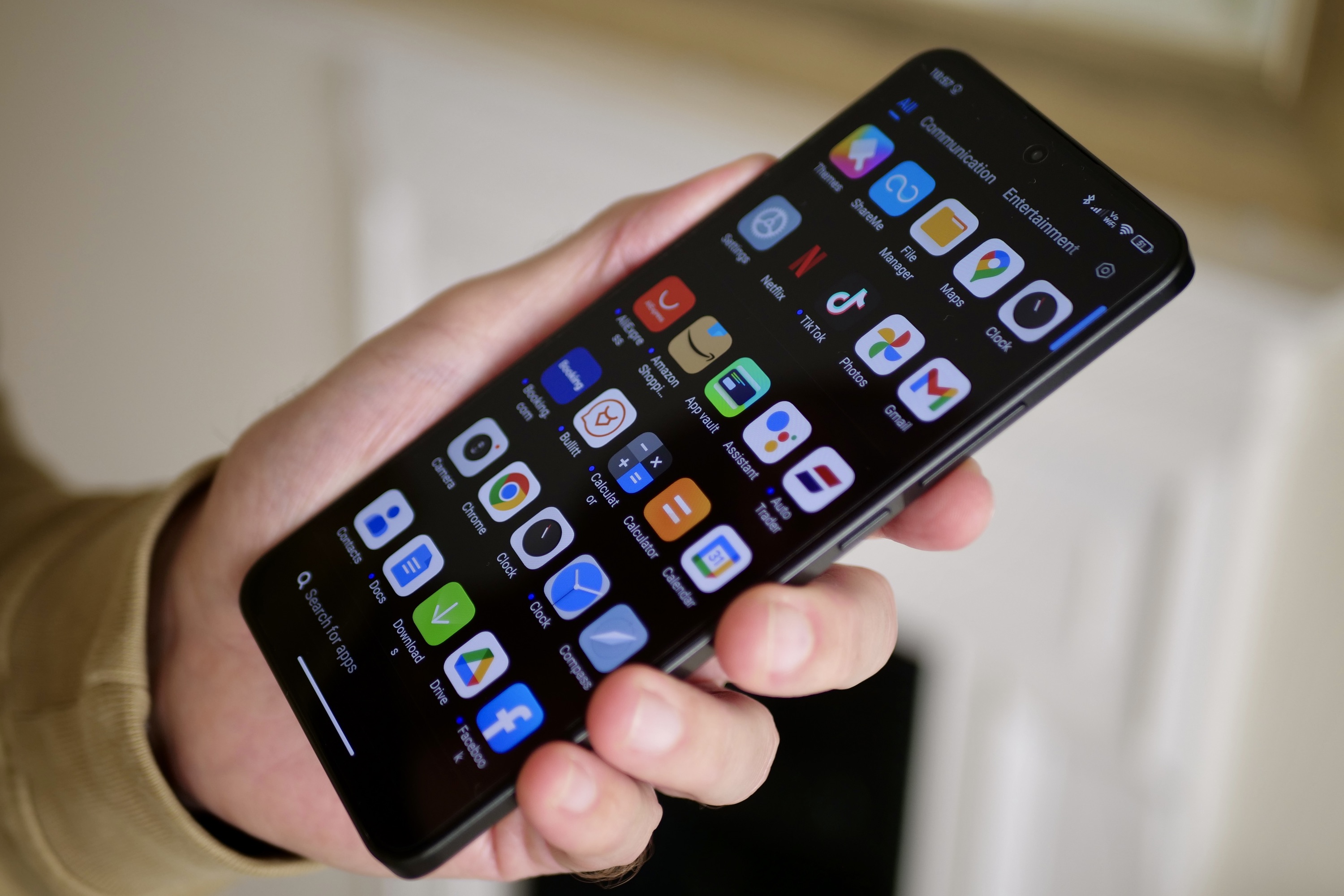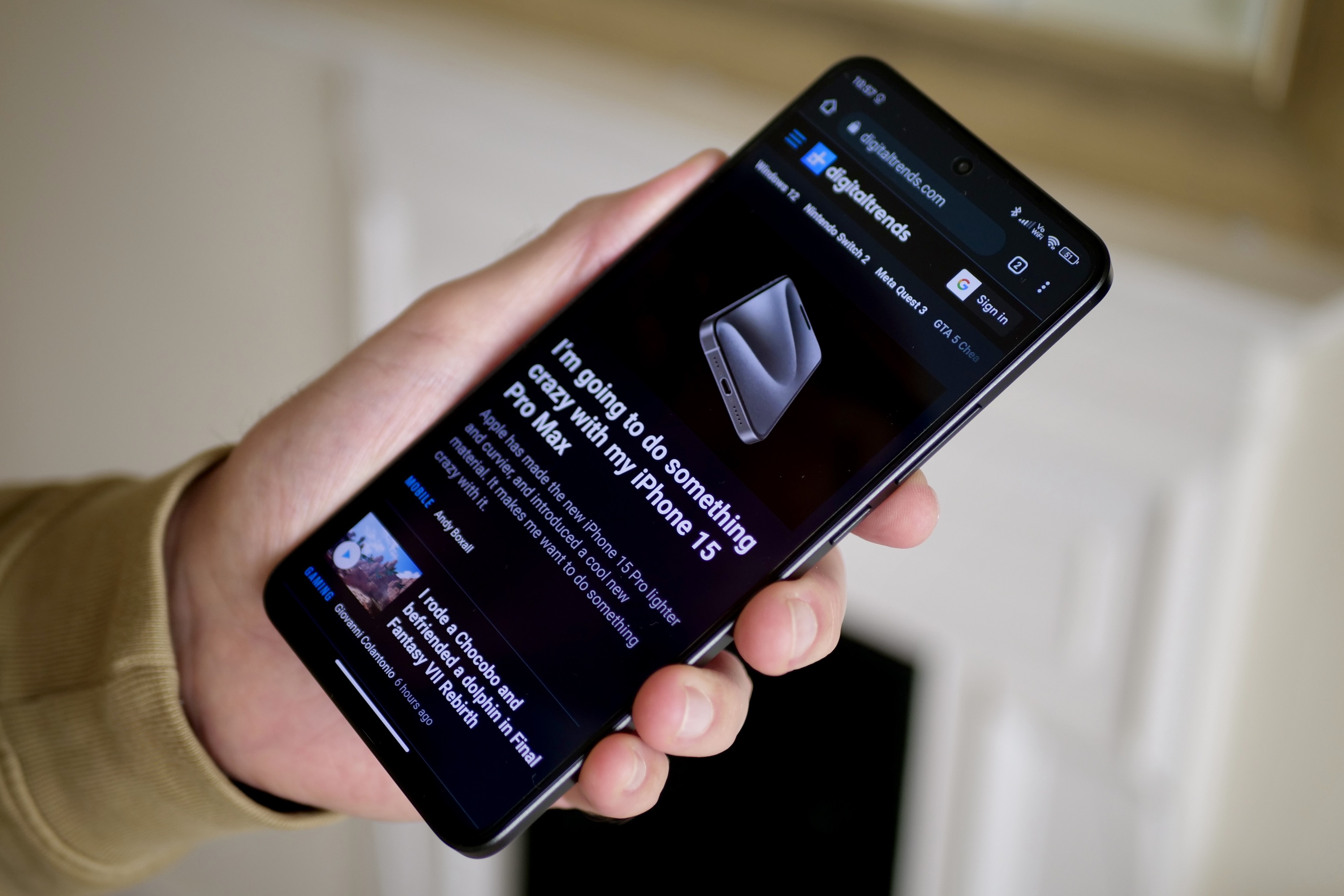
“The Xiaomi 13T Pro is a decent smartphone let down by its inability to stand out and deliver on the promise of its Leica camera.”
- Very fast battery charging
- IP68 water and dust resistance
- Strong processor for gaming
- Customizable software
- Poor wide-angle camera
- Lackluster selfie camera
- Software can be unreliable
The Xiaomi 13T Pro has a bit of a problem, and it’s one the manufacturer can’t do much about. It’s not a bad phone at all, but it faces a sea of excellent ones released over the past year.
It doesn’t help that its specifications aren’t always top-notch or that it’s a downgrade from previous models in some cases. And although there’s a very famous camera maker’s name slapped on the back, it struggles to make the most of that collaboration. We end up with a phone that looks rather out of place among so many incredible smartphones available alongside it. Here’s why.
A cool and unusual smartphone design

The Xiaomi 13T Pro has a glass back, a metal frame with a visually pleasing texture to it, and Gorilla Glass 5 over the 6.67-inch, 144Hz AMOLED screen. It comes in the basic black seen in our photos, in a Meadow Green color that’s also made of glass, or an Alpine Blue with a vegan leather back. Get it in glass, and it weighs 206 grams and is 8.49mm thick, so it’s quite chunky next to the new lightweight iPhone 15 Pro. The flat glass and sides are made more comfortable by the slightly tapered glass rear, but this is still a bit of a chunky, slippery phone to hold.
There are bold designs, and then there’s the Xiaomi 13T Pro’s camera module. It’s willfully sharp and strong lines make a clear statement, and it protrudes enough from the smooth, hyperreflective rear panel to make you think it’s hiding something very special indeed — especially as Leica’s branding is also so obvious. There’s a 50-megapixel main camera with optical image stabilization (OIS), a 50MP telephoto camera, and a 12MP wide-angle camera, while around the front is a 20MP selfie camera.

Inside the box with the Xiaomi 13T Pro is a flexible, transparent case that obviously adds protection, but also increases the phone’s not-inconsiderable weight and girth — a consequence of its 20:9 aspect ratio screen.
There’s an IP68 water resistance rating, which adds confidence, and there are no complaints about the build quality either. It’s every bit the high-quality smartphone you’d expect from the company.
MediaTek’s new chip really helps

Inside the Xiaomi 13T Pro is a significant change over the Xiaomi 13 Pro, Xiaomi 12T Pro, and Xiaomi 12 Pro. That’s because the company has used a MediaTek Dimensity 9200+ processor, which replaces the Qualcomm Snapdragon chips used in previous models in Xiaomi’s “number” range. The screen has taken a resolution hit compared to the 13 Pro, dropping down to 2712 x 1220 pixels, although it does have a strong list of cool features. That includes 2880Hz PWM dimming, 2600 nits maximum brightness, Dolby Vision certification, and a 480Hz touch sampling rate.
The screen shows Android 13 with Xiaomi’s MIUI 14 interface. There are a lot of preinstalled apps on my review phone, including TikTok, WPS Office, AliExpress, Opera, and Spotify, plus all of Xiaomi’s tools such as a Notes app, a weather app, a calculator, a compass, and a whole lot more. I’ve been using the Xiaomi 13T Pro as my main phone for a few days, and I find MIUI is somewhat intrusive with its suggestions to try this or that app. At least it’s customizable, so I can change the look. Notifications are its weak point, as they don’t reliably appear on the lock screen.
Performance is excellent, though, and MIUI flows smoothly, even if some of the animations are a little ponderous by default. But the real joy of Xiaomi’s software is that I can change it from “relaxed” to “balanced” or “fast” if it bothers me too much. It’s this kind of in-depth tweaking that makes MIUI appealing to so many people. There’s good news on the software update front though, as Xiaomi promises four major Android updates and five years of security patches with the Xiaomi 13T Pro.
I played Asphalt 9: Legends, and it was fluid, smooth, and fast. Plus, the dual speakers are loud, making it a fun gaming phone. The system’s speed is a credit to the Dimensity 9200+, which is a rarity in phones released outside China, and as the Xiaomi phone proves, it’s a shame this is the case.
The camera on the Xiaomi 13T Pro gets left behind

I’ve already described how the camera module makes a strong impression, but can the MediaTek Dimensity 9200+ make the most out of the camera hardware? First, what does Leica bring to the phone? It adds its “photographic styles,” which work a bit like filters to change the look of your photos. It also supplies the lenses for the cameras to give that desirable Leica look to your final images. Leica’s partnership with Xiaomi echoes the one it shared with Huawei, and it has given us some really great cameras already, with the Xiaomi 13 Pro springing instantly to mind. The 13T Pro needs, at the minimum, to match the superb ability of the camera on that phone.
However, it’s not at that level right now. I’m using the phone ahead of release, so software updates may come in the future to improve it, but the camera hasn’t impressed as instantly as the Xiaomi 13 Pro’s.
Where are the problems? It has trouble focusing when getting in close, but not that close, while the wide-angle camera disappoints with low quality and little consistency with the main camera. Selfies are also pretty poor, with washed-out colors and severe skin smoothing on the default setting, plus poor edge detection accuracy when using the selfie camera’s portrait mode.
As is becoming a trend this year, the main camera is perfectly acceptable most of the time, and the 2x zoom photos are decent as well. But when you dig into the wide-angle camera or other modes, such as the highly smoothed-out Night mode, it’s just not inspiring — and I think that’s a problem when the camera has Leica’s name attached.
Incredible fast charging makes life easy

Everything you could want is provided on the connectivity side, including NFC for mobile payments, Bluetooth 5.4, Wi-Fi 7, and 5G with dual-SIM support. However, according to Xiaomi, this does differ based on the market, so check before buying if one of these features is essential to you. The phone comes with up to 1TB of storage space, with the basic version offering 256GB.
A 5,000mAh battery powers the phone, and it’s recharged using the supplied 120-watt HyperCharge fast charger. Xiaomi says it takes just 19 minutes to fully recharge, and in our tests, this may be a little optimistic — with it taking about 23 minutes to go from 1% to 100%. However, I tested it using an adapter to change the European-spec wall plug to a U.K. one, which may cause the discrepancy.

This aside, it’s still incredibly fast to charge and easily one of the fastest we’ve ever tested. It almost makes up for the Xiaomi 13T Pro not having wireless charging, an unfortunate feature omission on a modern smartphone. In my time with the phone so far, the battery appears to be capable of lasting about two days maximum on a single charge, with around three hours of screen time on each day.
Xiaomi 13T Pro price and availability
The Xiaomi 13T Pro is available in the U.K. starting September 26, with no U.S. release expected. The cheapest model has 12GB of RAM and 256GB of storage space, and costs 649 British pounds, or around $795. There are two other models, a 12GB/512GB version for 699 pounds (about $857) and a top-end 16GB/1TB model at 799 pounds (about $980). In addition to being able to buy the Xiaomi 13T Pro through the mi.com website, it’ll be sold via the Three UK and Vodafone Ireland networks, and retailers including Amazon and Very.
What about the Xiaomi 13T?

The Xiaomi 13T Pro has a cheaper sibling called simply the Xiaomi 13T, which looks very similar, but slightly differs in specification. It has a 6.67-inch, 144Hz AMOLED screen, a MediaTek Dimensity 8200-Ultra processor, 67W fast charging for the 5,000mAh battery, an IP68 water and dust resistance rating, and 5G connectivity. The camera has been tuned by Leica, and is made up of a 50MP main camera, a 12MP wide-angle camera, and a 50MP telephoto camera. It comes in the same black, Meadow Green, or Alpine Blue vegan leather (seen in the image above) finishes, and only one 8GB/256GB configuration. It costs 549 pounds, which is around $672, and is also available from September 26.
The Xiaomi 13T Pro’s problem is all the other phones

The Xiaomi 13T Pro is an odd mishmash of features and designs from the Xiaomi 12T Pro, the Xiaomi 12 Pro, and the Xiaomi 13 Pro. It has the same charging technology as all three of these devices and a similar “family” design and style. The screen is basically the same as the 12T Pro’s, just with a slightly higher refresh rate and PWM dimming, but it has a notably less impressive camera than its older siblings.
I don’t think the switch to MediaTek’s Dimensity chip is an issue, as the phone’s overall performance is excellent, but I’m not sure enough has been done in terms of tuning the camera to work with it. There’s also no standout camera feature, with the 12T Pro coming with a 200MP camera when it launched this time last year. Instead, the camera is very similar to the 12 Pro, just with a lower-resolution wide-angle camera.
If you already own any of these phones, there’s no obvious reason to upgrade, and if you have a 12 Pro or 12T Pro, then you should be looking at the superb Xiaomi 13 Pro as your next phone. The price means for everyone else, there’s a massive amount of choice available, and it’s difficult not to recommend looking very closely at the Samsung Galaxy S23, the Google Pixel 8 Pro, the iPhone 15, or the OnePlus 11 instead. Or, if you want to save money, even the Google Pixel 7a or the Nothing Phone 2 are solid options.
This is the Xiaomi 13T Pro’s biggest problem. It’s not bad, the design is unique, and there’s plenty of performance on demand, but the feature list and camera look mediocre next to the many outstanding, similarly priced phones released over the past year.
























